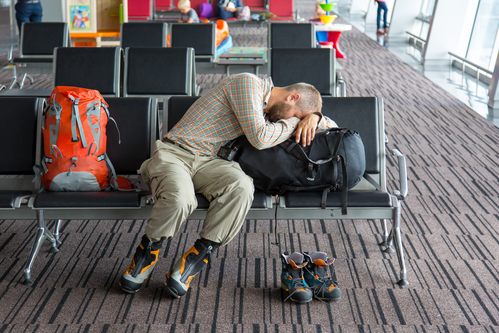With the busy summer travel season approaching, there’s talk about potential travel turbulence ahead as airlines deal with personnel and equipment shortages.
Traveling only with carry-on bags changes everything
There are two kinds of fliers when airlines and airports are in crisis: The ones who worry about themselves and their checked luggage and the ones who travel only with bags they can carry on. Traveling only with carry-on bags changes everything: You can alter your itinerary instantly without worrying about where your checked bags are headed. You always have access to your clothing and supplies no matter how long the delay. And you do not have to beg the airlines in vain for your bags if you’re stuck overnight in an unexpected place. Of course, carrying on comes with its own responsibility: You must pack less, cut frills and edit your wardrobe for maximum effect. If you can not get down to carry-on trim, ship excess bags. FedEx and UPS are much more reliable than the airlines anyway.
Related: 5 Essential Packing Tips
Look, fellow fliers, this is not 1997. Everything you need now is online. We do not have to be strangers in a strange land anymore. You are no longer at the mercy of a snooty concierge at a fancy hotel or a green kid masquerading as the night manager of a suburban limited-service property. If it exists and you need it on the road a 24 hour pharmacy, an ATM, same day laundry and dry cleaners, clothing shops, a nearby supermarket or a late night restaurant you can find it on the Web. And there’ll be a map and directions to get you there.
Information is Protection – Know your Air Traveler Rights
The Department of Transportation’s monthly Air Travel Consumer Report is a good place to start. It has a wealth of information about on time performance, lost luggage rates and even hour by hour operations at the nations leading airports. But you will find even better and more specific information at sites like FlightStats.com. You can check your flights operations for days at a time, assess your airports performance and find all sorts of practical details about routes, facilities and other variables. Armed with useful information from these sources, you can make comparatively intelligent decisions on when and what carrier to fly.
Non-stop Versus Connecting Flights
While from the onset it would appear that non-stop is the way to fly, there are several plausible reasons why you might book a connecting itinerary when there is a non stop alternative. The price for a connecting trip might be lower; the connection might be on the airline where you have elite frequent flier status; or a connecting itinerary lets you avoid a non stop flight that uses a tiny regional jet. But when all heck breaks loose, all those plausible explanations simply do not stack up. The more the airlines screw up, the more you need to be on a non-stop, so consider this – it’s a simple numbers game: Take two flights when one would get you where you’re going and you double your chances of having the airline mess up your schedule.
Since even the shortest flight can now devolve into a multi-day nightmare, you need to have plan for contingencies. Spend a minute or two before you leave for the airport and make sure that you know the other carriers flying your route. Have a good idea of alternate itineraries you can arrange if your initial flights cancel. This is especially valuable when your trip takes you through a hub en route to your final destination. Always have a back up plan that uses a different hub. Even in the best of times, the overworked, under-trained and poorly paid ticket counter, airport club and gate agents would not know this information. In a chaotic situation, they may be unwilling or unable to look for alternatives. You’ve got a better chance of making another connection if you have information about alternate routings and alternative flights at your fingertips.
When an airline or an airport is melting down, you can avoid some of the chaos by having the right numbers programmed into your cellphone. At a minimum, program these numbers: the reservation lines of the airlines you use most frequently, the hotel chains you prefer and major car rental firms. If you have status in your frequent travel plans and have been given special numbers to call, program those numbers, too. Working with a tour operator? Have his or her number in there. With those numbers in your cellphone, you can instantly call and snare a decent hotel room at the airport if you need one. Or you can rent a car and drive to your final destination if necessary. And having the airline reservations numbers or a special frequent flier number to call may help you get priority treatment while the huddled masses tough it out at the overwhelmed ticket counters.
Pack Snacks in your Carry-on
I don’t want you to take the road warrior sobriquet too literally, but it is clear that we now need to have access to emergency supplies of food and water when we travel. Find some room in your carry on bag for a couple of protein or granola bars or some bags of nuts, raisins or trail mix. Anything that is shelf stable, low in sugar and high in nutrients will do. And bottled water is critical. Always leave a moment to stop at a shop beyond the security checkpoint and pick up a bottle or two of water.
If you travel a lot, Airport club lounges are the single best investment you can make in your own comfort, productivity and sanity on the road. They are oases of calm in the maelstrom and they give you access to comfy chairs, workspace, beverages, televisions and Internet access. At a minimum, make sure you’re a member of the club sponsored by the airline you fly the most frequently. And consider joining Priority Pass: For prices as low as $99 a year for a pay per visit plan or $4699 a year for unlimited free access, you’ll have entrée to 500 lounges around the world.






